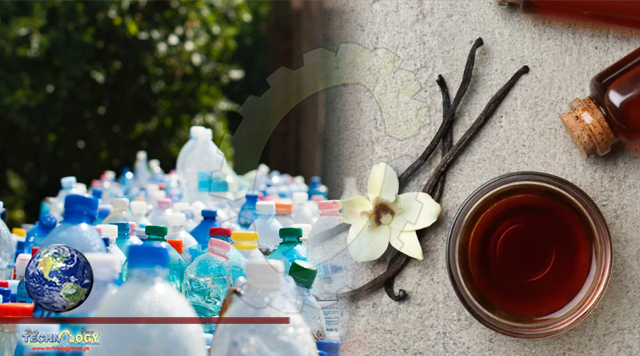In one of today’s more amusing scientific breakthroughs, researchers have successfully used engineered bacteria to convert plastic bottles into vanillin, which is the compound that creates the vanilla flavoring.

By DALE JOHN WONG
In a study conducted by a duo from The University of Edinburgh, Scotland, genetically-engineered E. coli bacteria was used to convert terephthalic acid (TA) – the subunit of the material polyethylene terephthalate (which is used to make plastic water bottles) – into vanillin.
Considering that TA and vanillin have similar chemical compositions, the duo found that the genetically-engineered E. coli needed to only make minor changes to the number of hydrogen and oxygen atoms bonded to the same carbon backbone.
After allowing the bacteria to mix with the TA at 37 degrees Celsius for one day, they found that around 79 percent of the TA had been converted into vanillin.
After previous experiments elsewhere demonstrated how to break down polyethylene terephthalate into TA, this discovery is more of an evolutionary step in trying to find more uses for discarded plastic.
After taking into account that around a million plastic bottles are sold every minute around the world, and with only 14 percent of them ever getting recycled, this discovery makes plenty of sense when you also factor in that the demand for vanillin far outstrips the supply of natural vanilla beans.
Joanna Sadler, who is one half of the research duo from the university, said that this was the “first example of using a biological system to upcycle plastic waste into a valuable industrial chemical”, with “very exciting implications for the circular economy”.
“Our work challenges the perception of plastic being a problematic waste, and instead demonstrates its use as a new carbon resource from which high-value products can be made,” said Stephen Wallace, the other half of the research duo and co-author of the study.
Not as weird as you may think.
If you’ve been enjoying vanilla-flavored foods such as ice cream and cakes without looking into the source of their ingredients, you might be a little grossed out to think of your desserts and drinks being flavored by chemicals derived from plastic.
But in reality, the method of creating vanilla flavoring from artificial sources has already been in practice for quite a while now.
In fact, German chemists Ferdinand Tiemann and Wilhelm Haarmann discovered a way to replicate vanilla using chemical compounds from coal all the way back in 1874, and since then, scientists have even managed to create vanillin out of things like paper, wood, and even cow dung, although not every single method has translated into widespread food manufacturing.
So while it may surprise you, around 85 percent of today’s vanillin is made artificially from chemicals that come from fossil fuels, and is the reason why so many of your favorite vanilla-flavored food items come so cheaply.
If you want the real thing from actual vanilla beans, you’ll have to pay a vastly bigger sum considering how difficult and painstaking the extraction process is.
Originally published at Mashable se asia